#bronze equestrian statue
Text
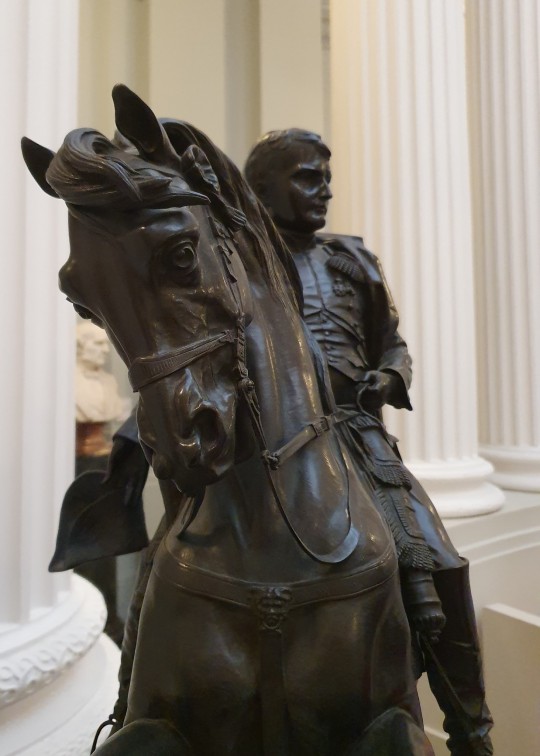

Vital Gabriel Dubray, Equestrian Statuette of Napoleon I, c. 1877, Lady Lever Art Gallery.
#Vital Gabriel Dubray#horse statue#bronze#1870s art#equestrian statue#art#horses#art history#horse#lady lever art gallery#art museum#art gallery#napoleon#statuette#19th century art#1800s art#my photos#my own photos#bronze statue
27 notes
·
View notes
Text
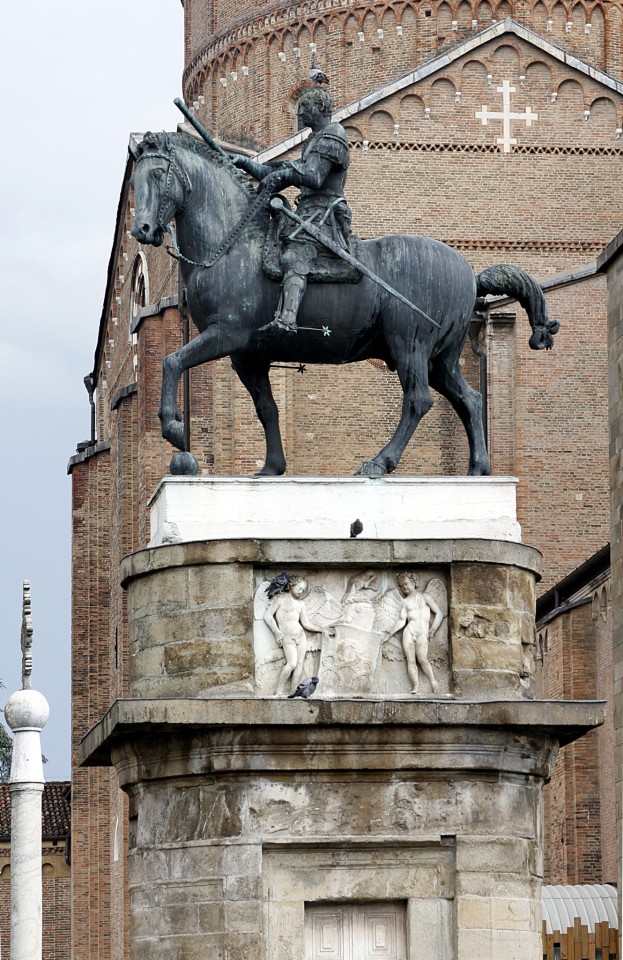
Equestrian statue of Gattamelata, Donatello, 1445-1453, bronze, Padua.
4 notes
·
View notes
Photo


Theodore Roosevelt Statue at American Museum of Natural History
has been removed concerning African American & Native American
#And someday we'll look back and say it was fun#amnh#museum#american museum of natural history#theodore roosevelt#equestrian#teddy#statue#bronze#sculpture#theodore roosevelt park#new york city#new york
2 notes
·
View notes
Text

Bronze equestrian statue of Marcus Aurelius, Roman, circa 161-180 AD
from The Capitoline Museum, Rome
465 notes
·
View notes
Photo

William Tecumseh Sherman, also known as the Sherman Memorial or Sherman Monument, is a sculpture group honoring William Tecumseh Sherman, created by Augustus Saint-Gaudens and located at Grand Army Plaza in Manhattan, New York. Cast in 1902 and dedicated on May 30, 1903, the gilded-bronze monument consists of an equestrian statue of Sherman and an accompanying statue, Victory, an allegorical female figure of the Greek goddess Nike. The statues are set on a Stony Creek granite pedestal designed by the architect Charles Follen McKim. 764 Doris C Freedman Pl, New York, NY
#New York City#new york#newyork#New-York#nyc#NY#Manhattan#urban#city#USA#United States#buildings#travel#journey#outdoors#street#architecture#visit-new-york.tumblr.com#Memorial#Sherman
113 notes
·
View notes
Text
The Coronation Procession
This week I spent a few days in London, so I decided to walk the route that the newly coronated King Charles III and Queen Camilla will take, called the Coronation Procession! The Kings Procession, before the service is this route, just in reverse. I took pictures of the highlights of the route, it will definitely be something to look back on in the future!

Westminster Abbey
Founded in 960 and consecrated in 1065, Westminster Abbey, has seen the coronations of 39 English and British monarchs and 16 royal weddings and is the burial site for 18 English, Scottish and British monarchs.

Whitehall, Downing Street and Horse Guards Parade
Whitehall is recognised as the centre of the Government of the United Kingdom and is lined with numerous departments and ministries, including the Ministry of Defence, Horse Guards and the Cabinet Office. The Palace of Whitehall previously occupied the area and was the residence of Kings Henry VIII through to William III, before it was destroyed by fire in 1698; only the Banqueting House has survived. As well as government buildings, the street is known for its memorial statues and monuments, including the UK's primary war memorial, the Cenotaph and the Women of World War Two memorial.
Downing Street was built in the 1680s by Sir George Downing. For more than three hundred years, it has held the official residences of both the First Lord of the Treasury, the office now synonymous with that of the Prime Minister, and the Second Lord of the Treasury, the office held by the Chancellor of the Exchequer. The Prime Minister's official residence is 10 Downing Street, and the Chancellor's official residence is Number 11. The government's Chief Whip has an official residence at Number 12. In practice, these office-holders may live in different flats; the current Chief Whip actually lives at Number 9.
Horse Guards Parade is a large parade ground off Whitehall. It is the site of the annual ceremonies of Trooping the Colour, which commemorates the monarch's official birthday, and the Beating Retreat. Horse Guards Parade was formerly the site of the Palace of Whitehall's tiltyard, where tournaments (including jousting) were held in the time of Henry VIII. It was also the scene of annual celebrations of the birthday of Queen Elizabeth I. The procession will go past the entrance, not onto the parade ground.

Trafalgar Square and the Equestrian Statue of King Charles I
The square is named after the Battle of Trafalgar, a British naval victory in the Napoleonic Wars with France and Spain that took place on 21 October 1805 off the coast of Cape Trafalgar, southwest Spain. In the centre of the square is Nelson's Column built to commemorate Vice-Admiral Horatio Nelson's decisive victory at the Battle of Trafalgar over the combined French and Spanish navies, during which he lost his life. The monument was constructed between 1840 and 1843 to a design by William Railton. The statue of Nelson was carved from Craigleith sandstone by sculptor Edward Hodges Baily. The four bronze lions around its base, designed by Sir Edwin Landseer, were added in 1867.
The equestrian statue of Charles I is a work by the French sculptor Hubert Le Sueur, probably cast in 1633. It is considered the central point of London. Its location at Charing Cross is on the former site of the most elaborate of the Eleanor crosses erected by Edward I (one of 12, to commemorate his late wife, put in location throughout the route of her funeral procession stops back to London). The statue faces down Whitehall towards Charles I's place of execution at Banqueting House. It was commissioned by Charles's Lord High Treasurer Richard Weston for the garden of his country house in Roehampton, Surrey. Following the English Civil War the statue was sold to a metalsmith to be broken down, but he hid it until the Restoration. It was installed in its current, far more prominent location in the centre of London in 1675, and the elaborately carved plinth dates from that time.

Admiralty Arch
Admiralty Arch was commissioned by King Edward VII in memory of his mother, Queen Victoria, and designed by Aston Webb, who also designed the Victoria Memorial and the new façade of Buckingham Palace at the other end of the Mall. It once served as residence of the First Sea Lord and was used by the Admiralty.



The Mall, St James Palace and Clarence House
The Mall is the long red coloured road joining Admiralty Arch and Buckingham Palace. It has seen several huge celebrations such as Victory in Europe Day (8 May 1945), lots of state visits, parades and Jubilee celebrations. When the royal family stand on the balcony of Buckingham Palace, The Mall is packed from top to bottom of vast crowds. The surface of The Mall is coloured red to give the effect of a giant red carpet leading up to Buckingham Palace. This colour was obtained using synthetic iron oxide pigment.
St James's Palace is the most senior royal palace in London. It is the ceremonial meeting place of the Accession Council, the office of the Marshal of the Diplomatic Corps, as well as the London residence of Princess Anne, the Princess Royal and her husband, The Duke and Duchess of Edinburgh, Princess Beatrice and Princess Alexandra. The Proclamation Gallery (pictured above) is a part of St James's Palace, and it is used after the death of a reigning monarch. The Accession Council meets to declare the new monarch. Once the monarch has made a sacred oath to the council, the Garter King of Arms steps onto the Proclamation Gallery, which overlooks Friary Court to proclaim the new monarch.
Clarence House currently serves as the London residence of King Charles III and Queen Camilla. It has been Charles's residence since 2003. From 1953 until 2002 it was home to Queen Elizabeth The Queen Mother, and before her, it was the official home of her daughter, Princess Elizabeth, the future Queen Elizabeth II.

The Queen Victoria Memorial
The Queen Victoria monument and surrounding gardens were created between 1904 and 1924. The main statue was unveiled by King George V. As well as Victoria, there are statues representing courage, constancy, victory, charity, truth and motherhood. In summer the flower beds are filled with geraniums, spider plants, salvias and weeping figs. Scarlet geraniums are used to match the tunics of The Queen's Guard at Buckingham Palace. In winter time the beds are filled with about 50,000 yellow wallflowers and red tulips.

Buckingham Palace
Buckingham Palace has served as the official London residence of the UK’s sovereigns since 1837. Buckingham Palace has 775 rooms. These include 19 State rooms, 52 Royal and guest bedrooms, 188 staff bedrooms, 92 offices and 78 bathrooms. King George III bought Buckingham House in 1761 for his wife Queen Charlotte to use as a comfortable family home close to St James's Palace, where many court functions were held. Buckingham House became known as the Queen's House, and 14 of George III's 15 children were born there. Queen Victoria was the first sovereign to take up residence in July 1837 and in June 1838 she was the first British sovereign to leave from Buckingham Palace for a Coronation. Her marriage to Prince Albert in 1840 soon showed up the Palace's shortcomings. A serious problem for the newly married couple was the absence of any nurseries (for her nine children) and too few bedrooms for visitors. The only solution was to move the Marble Arch - it now stands at the north-east corner of Hyde Park - and build a fourth wing, thereby creating a quadrangle. The cost of the new wing was largely covered by the sale of George IV's Royal Pavilion at Brighton.
I then walked past the Royal Mews, where the Gold State Coach is being prepared for the Coronation. Then onto Hyde Park, then Kensington Gardens and finally Kensington Palace, which is the official London residence of the Prince and Princess of Wales and their children, the Duke and Duchess of Gloucester and the Duke of Kent. I then treated myself to a scrummy yet expensive piece of lemon cake from the Prada cafè in Harrods 🍰😋
information from wikipedia, royal parks and the royal family website
#king charles coronation#coronation procession#king’s procession#king charles iii#queen camilla#british royal family#on that day I did 33k steps 🫠
100 notes
·
View notes
Text

La ville de Paris a son grand mât tout de bronze, sculpté de Victoires, et pour vigie Napoléon.
Honoré de Balzac
"The city of Paris has a great mast, made entirely of bronze, with sculpted Victories and Napoleon as its lookout."
Nowadays known as the Parisian centre of jewellery and luxury, Place Vendôme was originally ordered by Louis XIV to be a showcase for the great institutions of the monarchy. The project was finally abandoned, and the land sold to great financiers. In the centre, an equestrian statue of Louis XIV recalled the royal predominance. But in 1792, this statue suffered the same fate as all the other statues of the royal squares: it was knocked down.
In 1810, Napoleon inaugurated on the site of this old statue the current column, dedicated to the victorious soldiers of Austerlitz (1805). 43 meters high, it is inspired by the Trajan column of Rome. More than 1200 cannons taken from the Russians and Austrians were melted to make the bronze plates, while a statue of Napoleon in Marcus Aurelius was at the top.
At the fall of the emperor in 1814, the statue was taken down, replaced during the Restoration by a flag with a huge fleur-de-lis. In 1830, the new monarchy, led by Louis-Philippe, decided to replace the royal flag with a tricolor flag. Then, a few years later, a new statue of Napoleon is placed on the top of the Vendôme column. Louis-Philippe, who has always cultivated an image close to revolutionary ideals, wanted to revive the figure of the military hero. Napoleon is no longer represented as a Roman emperor, but dressed as a “little corporal” in a frock coat and hat. This statue would remain 30 years, until Napoleon III, judging it unworthy of his illustrious predecessor, replaced it with a new statue of Napoleon as a Roman emperor.
In 1871, during the Paris Commune, the symbols of Napoleonic power and imperialism were again very badly seen in a bad light and the column was demolished on May 16th.
After the Commune, the Third Republic rebuilt it. By 1874 the column was rebuilt in the centre of the Place Vendome with a copy of the original statue of Napoleon Bonaparte I dressed as a Roman emperor positioned on the top. Commissioned by Napoleon III, there was even an inner staircase, which could take you to the top of the column, that was now called the Colonne de la Grande Armee.
Photo: The Colonne Vendôme in Place Vendôme by Robert Doisneau, 1940.
#balzac#honore de balzac#quote#napoleon#bonaparte#napoleon boanparte#french#colonne vendome#place vendome#architecture#design#paris#robert doisneau#french history#power#fame
39 notes
·
View notes
Text

The new large glass hall built inside what was called the "Giardino Romano" in the Palazzo Dei Conservatory today contains the equestrian statue of Marcus Aurelius together with some of the main Capitoline bronzes, the gilt bronze Hercules from the Foro Boario and the remains of Constantine's bronze colossus.
8 notes
·
View notes
Text


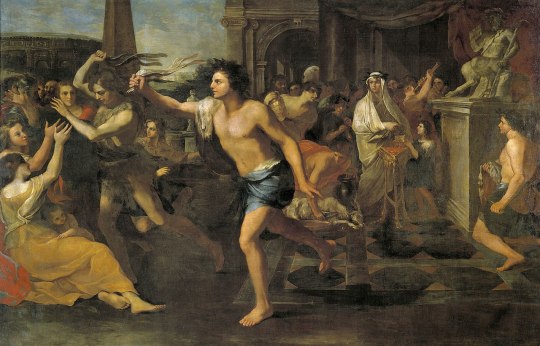
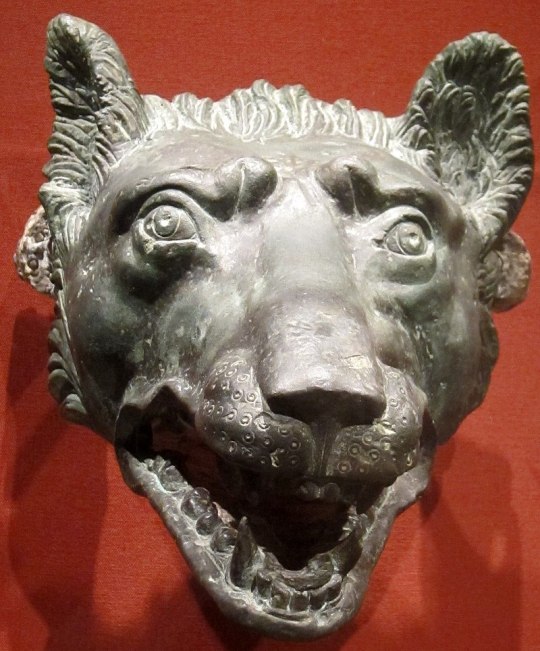
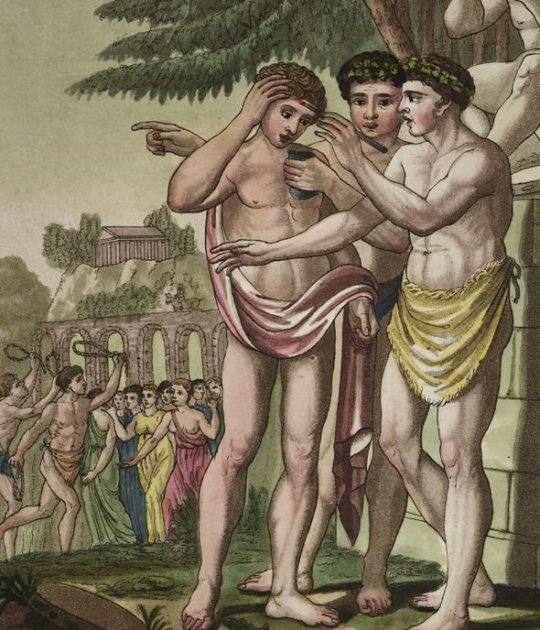

Lupercalia
Lupercalia as a pastoral festival of Ancient Rome observed annually on February 15 to purify the city, promoting health and fertility.Lupercalia was also known as dies Februatus, after the purification instruments called februa, the basis for the month named Februarius.
The festival was originally known as Februa ("Purifications" or "Purgings") after the februum which was used on the day. It was also known as Februatus and gave its name variously, as epithet to Juno Februalis, Februlis, or Februata in her role as patron deity of that month; to a supposed purification deity called Februus; and to February (mensis Februarius), the month during which the festival occurred. Ovid connects februare to an Etruscan word for "purging".
The name Lupercalia was believed in antiquity to evince some connection with the Ancient Greek festival of the Arcadian Lykaia, a wolf festival (Greek: λύκος, lýkos; Latin: lupus), and the worship of Lycaean Pan, assumed to be a Greek equivalent to Faunus, as instituted by Evander. Justin describes a cult image of "the Lycaean god, whom the Greeks call Pan and the Romans Lupercus", as nude, save for a goatskin girdle.
The statue stood in the Lupercal, the cave where tradition held that Romulus and Remus were suckled by the she-wolf (Lupa). The cave lay at the foot of the Palatine Hill, on which Romulus was thought to have founded Rome. The name of the festival most likely derives from lupus, "wolf", though both the etymology and its significance are obscure. Despite Justin's assertion, no deity named "Lupercus" has been identified.
Locations
The rites were confined to the Lupercal cave, the Palatine Hill, and the Forum, all of which were central locations in Rome's foundation myth. Near the cave stood a sanctuary of Rumina, goddess of breastfeeding; and the wild fig-tree (Ficus Ruminalis) to which Romulus and Remus were brought by the divine intervention of the river-god Tiberinus; some Roman sources name the wild fig tree caprificus, literally "goat fig". Like the cultivated fig, its fruit is pendulous, and the tree exudes a milky sap if cut, which makes it a good candidate for a cult of breastfeeding.
Priesthoods
The Lupercalia had its own priesthood, the Luperci ("brothers of the wolf"), whose institution and rites were attributed either to the Arcadian culture-hero Evander, or to Romulus and Remus, erstwhile shepherds who had each established a group of followers. The Luperci were young men (iuvenes), usually between the ages of 20 and 40. They formed two religious collegia (associations) based on ancestry; the Quinctiliani (named after the gens Quinctia) and the Fabiani (named after the gens Fabia). Each college was headed by a magister.
In 44 BC, a third college, the Juliani, was instituted in honor of Julius Caesar; its first magister was Mark Antony. The college of Juliani disbanded or lapsed following the Assassination of Julius Caesar, and was not re-established in the reforms of his successor, Augustus. In the Imperial era, membership of the two traditional collegia was opened to iuvenes of equestrian status.
Lupercalia most likely derives from lupus, "wolf", though both the etymology and its significance are obscure[8](bronze wolf's head, 1st century AD)
21 notes
·
View notes
Text
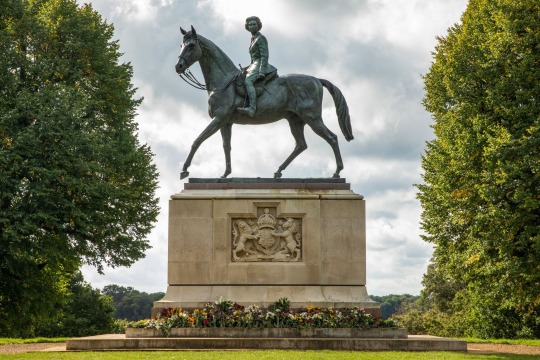
Floral tributes are pictured in front of an equestrian-themed statue of Elizabeth II in Windsor Great Park on 22 September 2022 in Windsor, United Kingdom. The statue, featuring a bronze sculpture by Philip Jackson, was a Golden Jubilee gift from the Crown Estate.
45 notes
·
View notes
Text
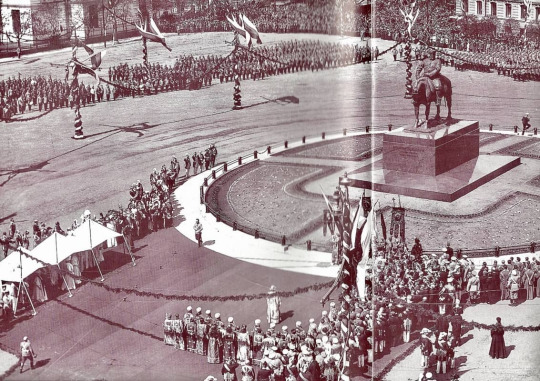
Trubetskoi's bronze equestrian statue of Tsar Alexander III, unveiled in 1909 (photo of ceremony above). Public opinion on the statue was conflicted - notably Grand Duke Vladimir Alexandrovich (Tsar Alexander III's brother) disapproved. Tsar Nicholas II however, did not see the statue as a caricature or symbol of the autocracy's inertia, but as a representation of power.

The statue was removed in 1937, but in 1994 was relocated to the courtyard of the Marble Palace.
#Russian History#Tsarist History#Tsar Nicholas II#Tsar Alexander III#Grand Duke Vladimir Alexandrovich#Art#Art History
2 notes
·
View notes
Photo

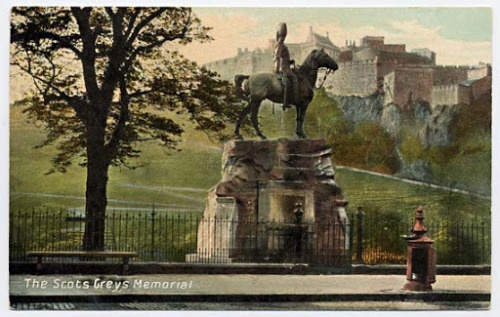

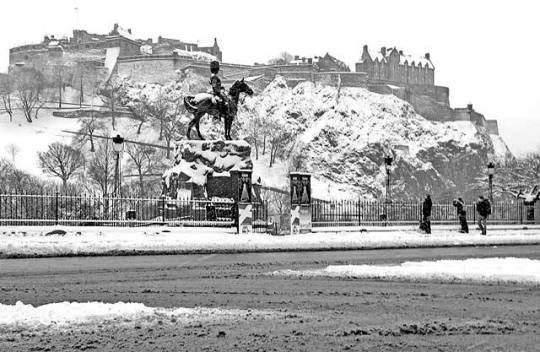
The memorial erected to the Fallen Heroes of the Royal Scots Greys (2nd Dragoons) on Princess Street in Edinburgh was unveiled by the Earl of Roseberry, K.G., P.C., on 16th November 1906.
The memorial is opposite the junction with Frederick Street and is an equestrian statue in bronze, of a trooper of the Scots Greys in full review order of 1899.
The statue is mounted on a pedestal of rock which bears the bronze plaque containing the inscription and Regimental badges. The sculptor was Mr William Birnie Rhind; the models for the statue were *Sergeant-Major Anthony James Hinnigan and his horse called “Polly”.
Anthony James Hinnigan was born in Jedburgh in 1866 and in 1882, at the age of 16, he joined the Royal Scots Greys. For the next 17 years he served with the Greys on home duty but in September 1899, by now with the rank of Sergeant-Major, he went with the Greys to South Africa when they were mobilised for service in the Second Boer War.
On his return from South Africa in 1904 Sergeant-Major Hinnigan and his horse Polly were selected as the models for Rhind’s Memorial.
Sergeant-Major Hinnigan was discharged from the army in 1911 and became landlord at the Railway Inn at Irvine in Ayrshire.
*Please note I had a look around the net when researching this and relatives of many people who served in the regiment also claim that it was their relative in the statue, although most sources give Hinnigan’s name.
I would say with it’s prominent position on Princes Street in front of Edinburgh Castle, it is one of the most photographed statues in Edinburgh, and possibly Scotland. More on the Scots Greys Regiment in just over a week.
12 notes
·
View notes
Text



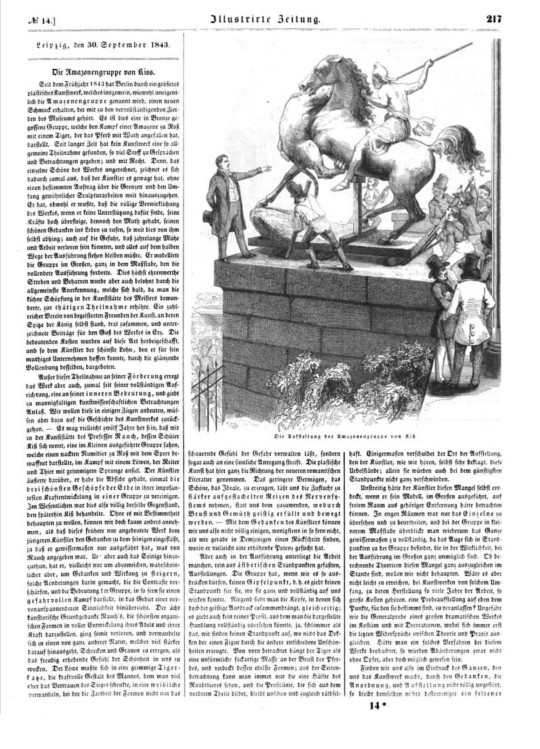





Amazon attacked by Panther by August Kiss 1841. Altes Museum.
"For thee [Artemis], too, the Amazons, whose mind is set on war, in Ephesos (Ephesus) beside the sea established an image beneath an oak trunk, and Hippo performed a holy rite for thee, and they themselves, O Oupis (Opis) Queen, around the image danced a war-dance--first in shields and armour, and again in a circle arraying a spacious choir. And the loud pipes thereto piped shrill accompaniment, that they might foot the dance together--for not yet did they pierce the bones of the fawn [i.e. to make flutes] . . . And the echo reached unto Sardis and to the Berekynthian range. And they with their feet beat loudly and therewith their quivers rattled. And afterwards around that image was raised a shrine of broad foundations [i.e. the Ephesian shrine]. That it shall dawn behold nothing more divine, naught richer. Easily would it outdo Pytho [Delphoi]."
-Callimachus, Hymn 3 to Artemis 240 ff (trans. Mair) (Greek poet C3rd BCE)
...
"Karl Friedrich Schinkel, the designer of the museum originally wanted to place here the equestrian statues of the two Prussian kings donating the museum, Frederick William III and IV. In fact, the museum, built between 1823 and 1830 as Königliches Museum, housed the royal private collections, and aimed at sharing their antique heritage with the educated bourgeoisie. However, Frederick William IV did not want royal statues here. Nevertheless, the idea was already on its way, and the stair railings cried out after equestrian statues.
The first equestrian statue, the Amazon killing a tiger or simply Amazon by the Silesia-born but Berlin-educated sculptor August Kiss was placed on the right rail in 1843. The September 30 issue of Illustrirte Zeitung reported in detail about its set-up and also provided art criticism. According to the author monogrammed L. R., the greatest merit of the work is that it was cast from public donation. The artist “was bold enough” to model the sculpture in life size in his studio, and only later a “large association of enthusiastic friends of art, led by the King” (of which Schinkel was also a member) collected the sum necessary to casting. This is, then, the first – albeit not visible – link between the museum and the sculpture: the active participation – “sacrifice” – of the educated burgeoisie in the enrichment of the new center of bourgeois culture – or, in the vocabulary and conception, its “temple”.
The prolific critic Karl August Varnhagen also praises the sculpture for this reason: “It is a great, bold, expressive and powerful work. … One can see that the horse is already lost, but the person is triumphing. The beautiful amazon radiating with spiritual superiority will survive, and will at least take revenge for the horse.” This concern for a secondary figure is unusual from a critic, but we know that Varnhagen fought the Napoleonic wars under Austrian, Prussian and Russian flags, and was able to exactly gauge what it means to lose a horse in an emergency. However, no one is yet concerned for the tiger at this time.
The Fairmount Park Art Association (now the Association for Public Art) acquired the plaster casts for both works in 1889, but the Amazon cast was in such poor condition that it could not be shipped to the United States.
With the assistance of the German government, a new plaster cast was made from the original bronze and exhibited in Memorial Hall until 1909. The decision to commission only American art prompted the Association to present the Amazon as a gift to Harvard’s Germanic Museum. However, once construction began on the new building for the Philadelphia Museum of Art, the Association arranged to cast another copy so that it could sit across from The Lion Fighter."
-taken from associationforpublicart and riowang's blogspot
#amazons#european art#german art#sculpture#history#literature#19th century art#august kiss#museums#altes museum#swastika#philadelphia museum of art
8 notes
·
View notes
Photo


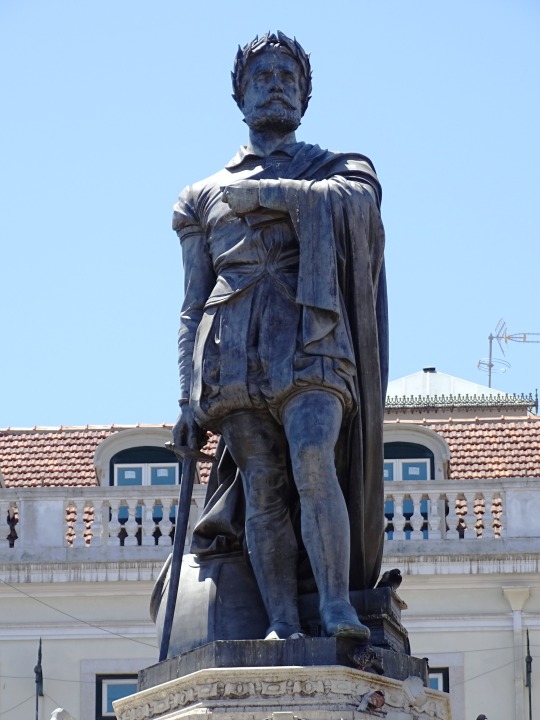




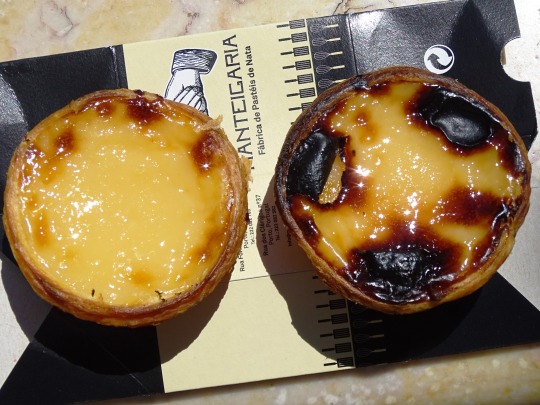
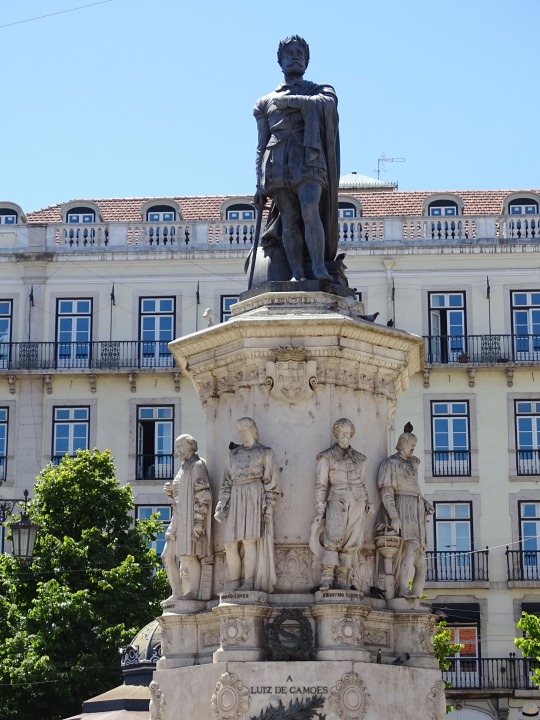
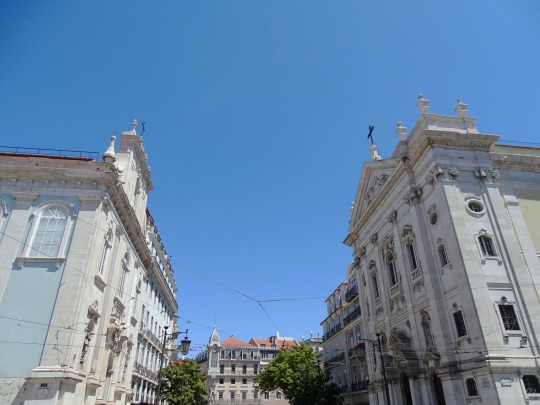
Praça Luís de Camões, Lisbon
Praça de Luís de Camões, colloquially Largo de Camões, is located in Chiado, in the parish of Misericórdia (until 2013 in the parish of Encarnação), in Lisbon.
Its toponymy is due to the desire to be installed there a statue to the poet of Os Lusíadas, inaugurated on October 9, 1867, driven by the desire to praise patriotism by the Central Commission 1 december 1640.
It is located the Consulate General of Brazil in the Portuguese capital and the Ministry of Economy.
The statue of Luís de Camões is of the sculptor Vítor Bastos and was inaugurated on October 9, 1867. The figure is bronze and is 4 meters high, based on an octogonal pedestal surrounded by eight statues: Fernão Lopes, Pedro Nunes, Gomes Eanes de Azurara, João de Barros, Fernão Lopes de Cantanhede, Vasco Mouzinho de Quevedo, Jerónimo Corte-Real and Francisco Sá de Menezes. The monument to Camões is the oldest in Lisbon in its kind, being more modern only than the equestrian statue of D. José I.
Source: Wikipedia
#Igreja de Nossa Senhora do Loreto dos Italianos#Lisboa#Lisbon#travel#Italian Church of Our Lady of the Loreto#Luís de Camões#Praça Luís de Camões#Camões Monument by Victor Bastos#bakery#Pastel de nata#Pasteis de Nata#street food#public art#vacation#summer 2021#tourist attraction#landmark#Chiado#cityscape#architecture#Luís de Camões Square#Southern Europe#Portugal#original photography
9 notes
·
View notes
Photo


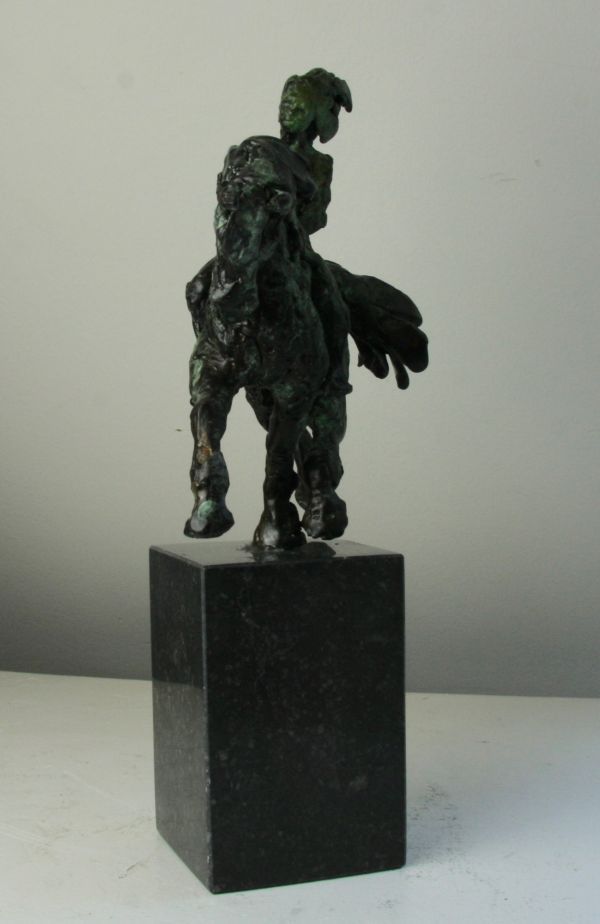

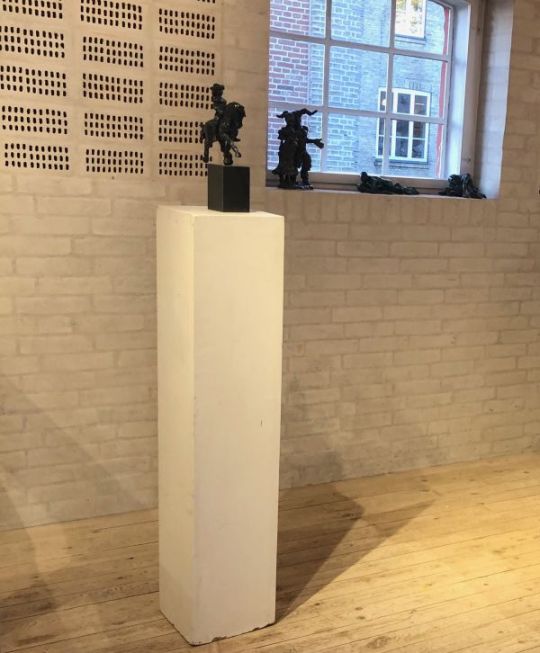
A sculpture titled 'The Equestrian (Nude Girl Horse Rider statue)' by sculptor Helle Rask Crawford. In a medium of bronze, grant and in an edition of /8.
3 notes
·
View notes
Text
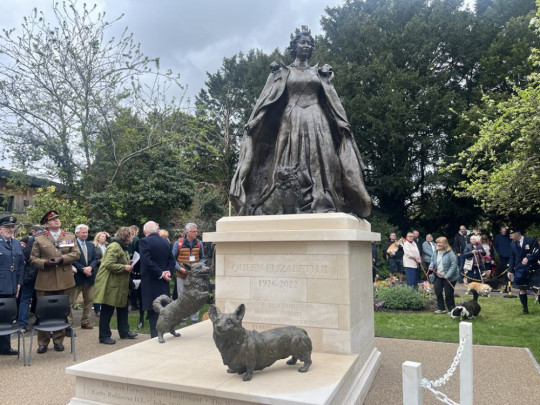
New bronze statue honoring the late Queen Elizabeth II - it's an interesting time to look at historic figures, particularly of women and see how the depictions vary over time. (2024)

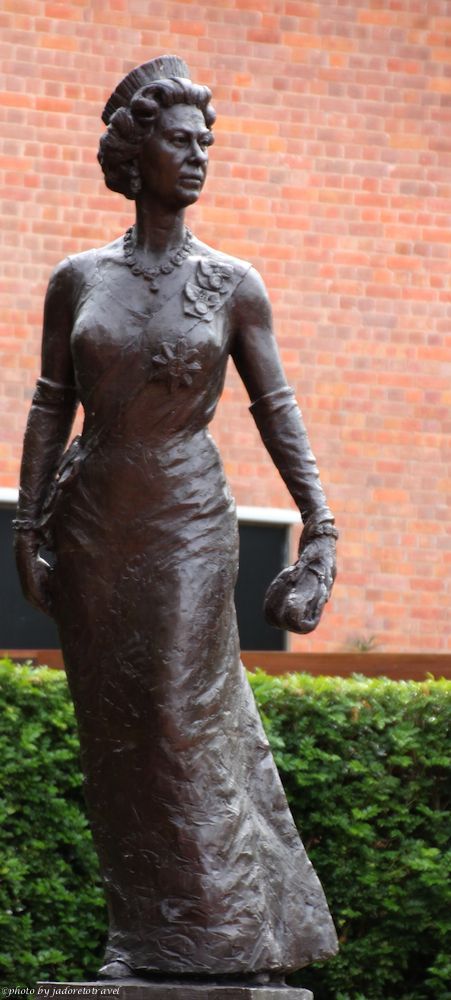

Standing statues


Seated statues


Younger images of Queen Elizabeth II (one on the left was damaged in protests)



Equestrian statues of Elizabeth II

my personal fave of statues (happens to be equestrian), good likeness, good movement, shows power but not grandeur
0 notes